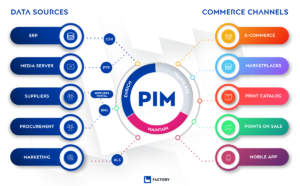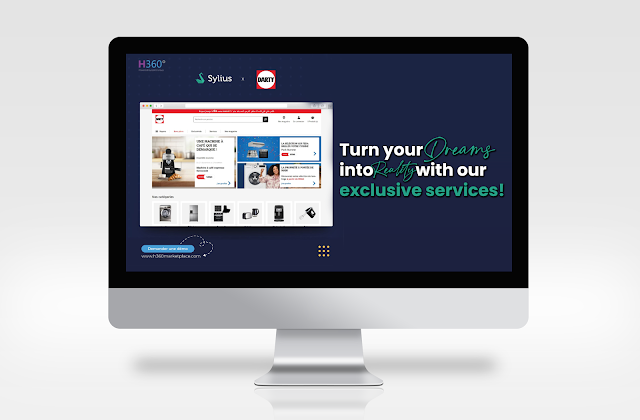The Benefits of Implementing a Product Information Management (PIM) System
In today’s digital age, managing vast amounts of product data efficiently and accurately is crucial for businesses of all sizes. This is where a Product Information Management (PIM) system comes into play. PIM solutions provide a centralized hub for organizing, standardizing, and distributing product information, enabling companies to streamline their marketing and sales efforts. In this article, we will explore the benefits of implementing a PIM system and how it can enhance your business operations.

What is a PIM System?
Before delving into the benefits of a PIM system, it is essential to understand what it entails. Product Information Management (PIM) focuses on managing and enriching product-related data. It serves as a reference for all the information required to market and sell products effectively. This includes product descriptions, specifications, images, pricing, translations, and more. A PIM system acts as a single source of truth for all product data, ensuring consistency and accuracy across various marketing and sales channels.
Streamlined Product Data Management
One of the primary advantages of implementing a PIM system is the ability to streamline product data management. By centralizing all product information in one place, businesses can establish a structured and organized repository. This eliminates data silos and ensures that accurate and up-to-date information is easily accessible to marketing, sales, and other relevant teams. With a PIM system, you can efficiently manage large volumes of product data, saving time and effort.
Enhanced Data Quality and Consistency
Maintaining high-quality and consistent product data is crucial for delivering a seamless customer experience. A PIM system enables businesses to enforce data standards and rules, ensuring that all product information is accurate, complete, and consistent across different channels. By eliminating inconsistencies and errors, companies can enhance customer trust and reduce the risk of returns or negative reviews. With a PIM system, you can enforce data governance and maintain data integrity throughout the product lifecycle.
Efficient Omnichannel Marketing
In today’s digital landscape, businesses must effectively market their products across multiple channels, including websites, social media platforms, marketplaces, and more. A PIM system enables companies to optimize their product information for each channel, ensuring that relevant data and assets are delivered to the right audience at the right time. With PIM, you can create channel-specific product feeds, adapt content for different languages and regions, and tailor messaging to specific target markets. This level of customization enhances the effectiveness of your marketing efforts and drives customer engagement.
Improved Time-to-Market
Launching new products or making updates to existing ones can be a time-consuming process without a proper system in place. A PIM system streamlines the product information workflow, enabling businesses to bring products to market faster. With centralized product data management, teams can collaborate more efficiently, reducing bottlenecks and improving overall productivity. A PIM system automates processes such as content creation, translation, and syndication, allowing businesses to respond quickly to market demands and gain a competitive edge.
Seamless Integration with Existing Systems
Implementing a PIM system does not mean starting from scratch. PIM solutions are designed to seamlessly integrate with existing systems, such as content management systems (CMS), customer relationship management (CRM) software, and e-commerce platforms. This integration allows for the synchronization of data across different systems, ensuring consistency and eliminating the need for manual data entry. By integrating PIM with your existing tech stack, you can maximize the value of your current investments and create a more efficient and connected infrastructure.
Increased Productivity and Collaboration
Collaboration between departments is essential for effective product management and marketing. A PIM system facilitates collaboration by providing a centralized platform for teams to work together on product data. With real-time access to accurate and up-to-date information, teams can collaborate seamlessly, making edits, approvals, and updates efficiently. This streamlined collaboration reduces communication gaps, enhances productivity, and ensures that everyone is working with the latest product information.
Improved Customer Experience
In today’s competitive marketplace, providing a superior customer experience is key to retaining and attracting customers. A PIM system plays a vital role in enhancing the customer experience by ensuring that accurate and rich product information is available across all touchpoints. With a PIM system, businesses can provide detailed product descriptions, high-quality images, relevant videos, and other multimedia assets that help customers make informed purchasing decisions. This level of product transparency and information leads to increased customer satisfaction and loyalty.
Data-Driven Insights and Analysis
Data is a valuable asset for any business, and a PIM system enables companies to leverage product data for insights and analysis. By analyzing customer preferences, buying patterns, and product performance, businesses can make data-driven decisions to optimize their product strategies. A PIM system provides analytics and reporting capabilities, allowing companies to measure the effectiveness of their marketing efforts, identify trends, and uncover opportunities for improvement. With access to actionable data, businesses can continuously refine their product offerings and enhance customer satisfaction.
Scalability and Flexibility
As businesses grow and expand, their product data management needs will evolve. A PIM system offers scalability and flexibility to accommodate changing requirements. Whether you have a small product catalog or a vast range of products, a PIM system can adapt to your needs. It allows you to add new products, update existing ones, and expand into new markets seamlessly. With a scalable PIM solution, you can future-proof your product data management strategy and ensure that it can support your business growth.
Cost and Time Savings
Implementing a PIM system may require an initial investment, but the long-term benefits outweigh the costs. By centralizing and automating product data management, businesses can save significant time and effort that would otherwise be spent on manual data entry, updates, and content creation. Additionally, with improved data quality and consistency, businesses can reduce the risk of errors, returns, and customer support costs. The efficiency gained from a PIM system translates into cost savings and allows teams to focus their resources on more strategic initiatives.
Choosing the Right PIM Solution
When selecting a PIM solution, it is essential to consider your specific business needs and requirements. Evaluate different vendors based on factors such as ease of use, scalability, integration capabilities, reporting and analytics, and customer support. Additionally, consider the unique features and functionalities offered by each solution, such as multilingual support, data enrichment capabilities, and workflow automation. By choosing the right PIM solution, you can optimize your product data management processes and drive business growth.
As a summary, the implementation of a Product Information Management (PIM) system stands as a pivotal strategy for businesses seeking to optimize their product data management processes, and H360’s Marketplace Solution emerges as the quintessential partner in realizing these objectives. Beyond the inherent benefits of enhanced data quality and consistency, efficient omnichannel marketing, and improved time-to-market, H360 offers a comprehensive suite of features tailored to empower businesses at every stage of their product data lifecycle.
H360 is not just a PIM solution; it is a catalyst for elevating the customer experience and securing a distinctive competitive edge in the marketplace. The platform’s advanced capabilities go beyond mere data organization, fostering a seamless and cohesive ecosystem that resonates with today’s digitally empowered consumers. By choosing H360, businesses not only gain access to a state-of-the-art PIM system but also open the door to unlocking the full potential of their product data.
In the dynamic landscape of the digital era, where customer expectations evolve rapidly, H360’s Marketplace Solution ensures that businesses stay agile, responsive, and positioned for growth. The platform becomes a strategic ally, enabling businesses to navigate complexities, adapt swiftly to market trends, and leverage their product data to its fullest extent.
Therefore, for businesses aspiring to thrive in today’s digital landscape, choosing H360 is not just a decision—it’s a commitment to unleashing the true power of product information. Embrace H360, choose the right PIM solution, and propel your business towards sustained growth and success in the dynamic and competitive digital marketplace.
Related Posts
Leave a Reply Cancel reply
Categories
Recent Posts
- How Retail SaaS No-Code Solutions Accelerate Digital Transformation
- Unlocking Customer Loyalty: The Power of CX Personalization and CRO
- Discover how H360 marketplace solution revolutionized Fnac Tunisia’s website
- Darty.tn: Enhancing User Experience with Sylius and React JS
- Optimizing Your Store’s Search with H360 Marketplace
Recent Comments
Categories
- Non classé (3)
- Technologie (9)




